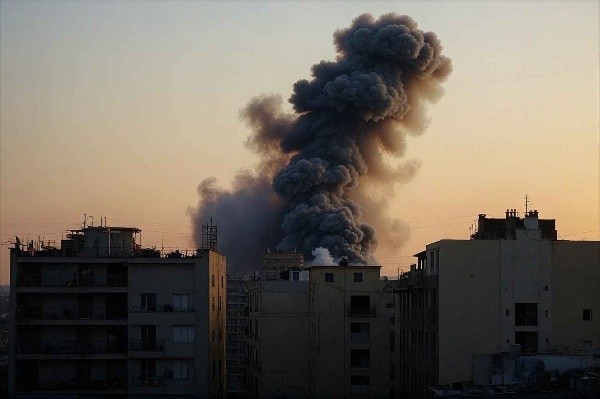The Death of Hamas Leader Yahya Sinwar: What We Know So Far
Israel and the US claim intelligence provided Sinwar’s whereabouts, but this is doubtful.
Loading...

Israel says the major attacks that levelled multiple residential buildings in southern Beirut targeted Hezbollah’s ‘central command’.
Overview of the Attacks
On Friday, Israel launched a series of significant airstrikes targeting the southern suburbs of Beirut, marking the most intense bombardment in its ongoing offensive against Lebanon. The Israeli military stated that these strikes aimed at Hezbollah's "central command," which they claimed was situated beneath residential buildings in the densely populated area of Dahiyeh. Reports indicate that over a dozen explosions rocked the neighborhood, with Hezbollah's Al-Manar TV reporting the destruction of at least seven buildings in the Haret Hreik suburb, leaving them in ruins. The scale of the attack was unprecedented, with more than 15 missiles reportedly hitting the area, prompting civil defense teams to battle multiple fires and call for blood donations due to anticipated casualties.
The Context of the Attacks
The attacks come amid escalating tensions between Israel and Hezbollah, with the latter being accused of using civilian areas as shields for its military operations. Israeli officials have justified their actions by asserting that Hezbollah has intentionally placed its headquarters in residential zones, thereby endangering civilians. Al Jazeera correspondent Ali Hashem emphasized the plight of the local population, noting that Dahiyeh is home to over half a million residents, many of whom have been attempting to evacuate as the violence escalates. The area has a history of destruction, having been heavily bombarded during the 2006 Israel-Hezbollah war.
Civilian Impact and Casualties
Initial reports from the aftermath of the strikes indicated at least two fatalities and 76 injuries, although the actual death toll is expected to rise significantly. The densely populated nature of Dahiyeh has raised concerns about the safety of civilians, with many families contemplating evacuation but facing limited options as attacks have spread across various locations in Lebanon. One resident from the nearby Palestinian refugee camp, Bourj el Baraneh, described the chaos, stating that the attack shook the entire area, prompting residents to flee.
Israeli Justifications and Future Actions
Israeli military officials characterized the strikes as "precise," claiming they targeted Hezbollah's operational capabilities. Reports from Israeli media suggested that Hezbollah leader Hassan Nasrallah was present at the headquarters during the attack, although sources close to Hezbollah denied this, asserting that he was in a secure location. Israeli Defense Minister Yoav Gallant indicated that the military still had "more work to do," hinting at the possibility of further strikes in the future.
International Reactions and Ceasefire Negotiations
The timing of the attacks raised eyebrows, particularly as discussions for a potential ceasefire were reportedly underway. U.S. Pentagon spokesperson Sabrina Singh confirmed that Israel did not notify the United States prior to the strikes, although Gallant did communicate with U.S. Secretary of Defense Lloyd Austin during the assault. Israeli Prime Minister Benjamin Netanyahu, speaking at the United Nations shortly before the attacks, reiterated Israel's commitment to neutralizing threats from Hezbollah, stating, "As long as Hezbollah chooses the path of war, Israel has no choice."
In contrast, Lebanon's Prime Minister Najib Mikati, also attending the UN General Assembly, condemned the attacks as a blatant disregard for international calls for peace, emphasizing that the aggression demonstrated Israel's indifference to diplomatic efforts aimed at achieving a ceasefire.
Conclusion
The recent escalation in violence between Israel and Hezbollah has resulted in significant destruction and civilian casualties in Lebanon. As the situation continues to develop, the international community watches closely, hoping for a resolution that prioritizes the safety and well-being of civilians caught in the crossfire.
Editor
Israel and the US claim intelligence provided Sinwar’s whereabouts, but this is doubtful.
Tata, who passed away on Wednesday, was known for his humility and his expansive vision.
Most citizens of this Middle Eastern country favor a military solution to the conflict with Hezbollah, and some even hope to “resettle Lebanon’s south”
